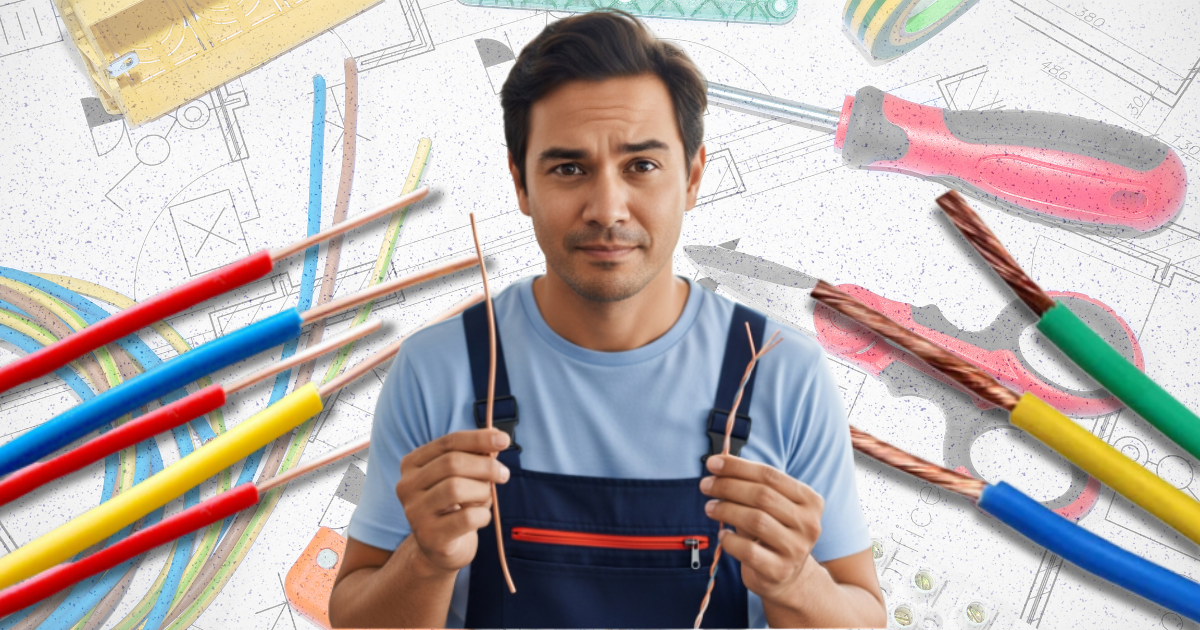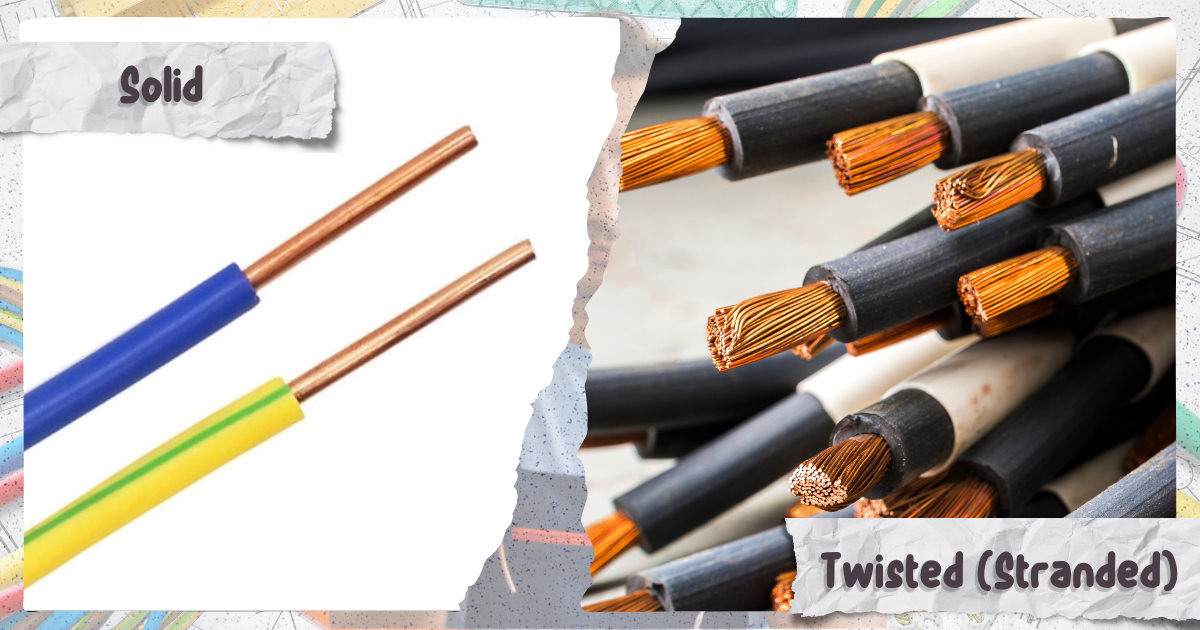Every electrical project, big or small, works best when you pick the right materials. The type of wire you use can make a huge difference in how well your setup performs and how safe it stays over time. Choosing the proper wire ensures everything runs smoothly and lasts longer
When it comes to wiring, solid wires and twisted (also called stranded) wires each have their own strengths. Which one fits your project depends on what the wire needs to do, where it will be installed, and how much it will move or bend.
In this article, we will explore the differences between solid and twisted wires and help you decide which one is the best fit for your electrical project.

Why Wire Type Matters in Electrical Work
To the common folks, all wires may look alike, but professionals and DIY enthusiasts need to understand that each type is built for a specific purpose. A wire’s ability to conduct electricity, handle resistance, or bend into place depends on its design. Using the wrong type can reduce efficiency or even damage the system, leading to overheating or connection issues in appliances and fixtures.
Choosing the right wire for your electrical system pays off in the long run. Unexpected repairs can arise from mismatched wires, particularly when they fail to meet their intended purpose. Electricians should always consider both the electrical load and the installation environment before deciding which wire to use, as this is crucial for ensuring proper functionality.
Solid wires and twisted (stranded) wires are the two most basic and commonly used wire types in electrical systems. They cover most household, commercial, and light industrial applications because they differ in flexibility, strength, and ease of installation, which are critical factors in wiring setups.
Solid Wires vs. Twisted (Stranded) Wires
Different wires carry electricity in different ways, affecting how well your project works. Using the correct wire helps keep everything safe and efficient. Understanding the difference between the two most basic types makes selecting the right one much easier.

Image credit: shanpowercable.com
Solid Wires | Twisted (Stranded) Wires | ||
| Solid wires are made of a single, thick metal conductor. They’re strong and work best in permanent installations, such as electrical wiring inside walls or outlet boxes. Solid wire works best when it stays in one place and doesn’t need to move. | Stranded wires are made by twisting several thin strands of wire together. This gives them flexibility. They are perfect for gadgets, portable tools, appliances, or setups that involve movement. This type is perfect when your wiring needs to move around or fit into flexible spaces. | ||
Pros | Cons | Pros | Cons |
|
|
|
|
Kailan Dapat Gamitin: Practical Use Cases and Other Types of Wires to Consider
Choosing between solid and twisted wire becomes easier when you look at the job site. Solid wire fits best inside walls, ceilings, and areas with little to no movement. It’s perfect for home circuits and fixed outlets.
Twisted wire, on the other hand, performs better where flexibility is needed. They’re useful in extension cords, speaker systems, or car wiring. It’s also a top pick for tools that get moved or unplugged often.
The environment of the installation is a big clue to look at when choosing the right type of wire. If the area is dry and secure, then go for a solid wire. If the installation or the item handles frequent motion and vibration, then it’s best to work with a twisted wire.
Also, keep in mind that while these two types of wires are the most basic, there are other types of wires and cables worth knowing, depending on the project’s complexity and environment. Here are a few:
- Shielded Wires: Have a conductive layer around them to block electrical interference. Used in data transmission, audio, or sensitive electronics.
- Coaxial Cables: Often used for TV, internet, and CCTV systems. They consist of a central conductor, insulation, shielding, and outer insulation.
- Multi-core Cables: Contain two or more insulated conductors in a single outer sheath. Used in appliances and control systems.
- Armored Cables: Feature a metal sheath for extra protection. These cables are particularly suitable for underground or exposed outdoor wiring applications.
- Thermoplastic High Heat-Resistant Nylon-Coated (THHN) Wires: Common in residential and commercial buildings for conduit wiring.
For most DIY or building projects, solid and stranded wires are enough. But as the project becomes more specialized, so does the wiring.
Safety Tips for Builders
Even with the right wire, safe installation is key to a successful electrical project. Paying attention to small details can prevent bigger problems later on. Here are some simple safety tips to keep in mind.
- Always check local electrical codes before starting
- Use the right connectors and terminal blocks for your wire type
- Don’t mix wire types unless your setup specifically allows it
- Label your wires to avoid confusion later
- When unsure, reach out to a licensed electrician
Following these small habits help prevent issues that can occur from improperly installed or utilized wires. And above that, they make sure that the wires are safe, protecting everyone in the space.
Smart Wiring, Smart Results
Electrical work is all about making smart, lasting decisions, and choosing the right wire is one of them. Solid and twisted wires may look simple, but their impact on performance, safety, and maintenance is significant. When you match your wiring to the needs of your project and environment, you are making sure that you are building something that lasts.
References
Consolidated Electronic Wire & Cable. (2021, April 23). Stranded Wire vs. Solid Wire in Electrical Applications. Consolidated Electronic Wire & Cable. Retrieved July 29, 2025, from https://www.conwire.com/blog/stranded-wire-vs-solid-wire-in-electrical-applications/
Fluke Networks. (2024, March 6). Stranded vs. Solid Wire Cable: How to Choose. Fluke Networks. Retrieved July 29, 2025, from https://www.flukenetworks.com/blog/cabling-chronicles/considerations-choosing-stranded-vs-solid-cable










